
Giraffes are the gentle giants of the jungle. Aside from being the tallest animals in the world, what else is there to know about giraffes? Take a closer look at these creatures’ diet, behavior, and other unique traits with these giraffe facts.
- The giraffe’s long neck can stretch more than 7 feet in length.
- The giraffe’s neck makes up almost half of its overall height.
- Like humans, the giraffes have 7 vertebrae the neck.
- In general, an adult giraffe stands 14 to 19 ft.
- A giraffe’s legs stand 6 ft tall.
- The Giraffe is the tallest creature in the animal kingdom.
- Giraffes can run as fast as 60 km/h.
- At a regular pace, giraffes walk 15 km/h.
- A giraffe’s diet consists of the leaves and twigs of acacia, mimosa, and wild apricot trees.
- Giraffes in captivity lie down while sleeping.
- Giraffes have a lifespan of 25 years.
- Baby giraffes are called calves.
- Calves can stand and walk right after birth.
- Giraffes’ main predators are lions, leopards, and hyenas.
- Many calves die early because they are the primary target of their predators.
- Giraffes give birth while standing up.
- Usually, giraffes also sleep while sitting or standing.
- A giraffe’s neck is “too short” to reach the ground – they have to kneel or spread their front legs to drink water from the ground.
- Giraffes in the wild remain standing as a way to ward off predators.
- Most of a giraffe’s water intake comes from the plants they consume, so they only need to gulp water once every few days.
Giraffes were once called "camel-leopards."
It may sound like the most unlikely combination of animals, but it’s true:
When the first giraffe was brought to Europe and presented to Julius Caesar in 46 BC, the Romans believed it was a combination of a camel and a leopard. Hence, the species name Camelopardalis. It comes from the Greek “Kamelos,” which means “camel,” and “Pardalis,” which means “leopard.” Bet you didn’t expect that for giraffe facts?
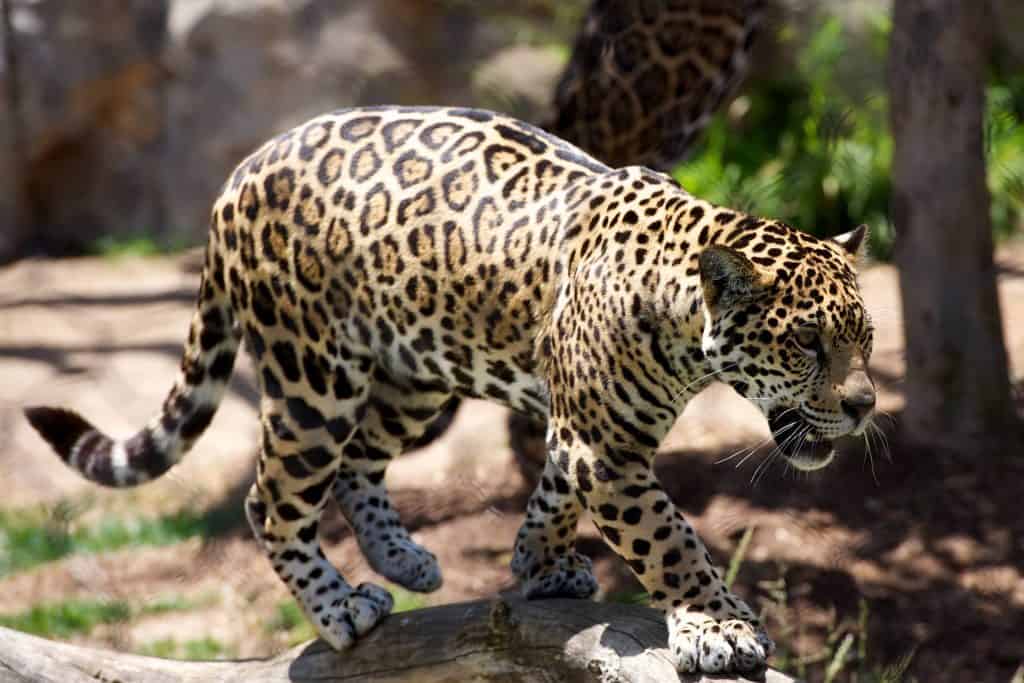
Giraffes originated from the savanna areas in the Sub-Saharan region of Africa.
Giraffes originated from the savanna areas in the Sub-Saharan region of Africa. Today, the International Union for Conservation of Nature (IUCN) recognizes the giraffes as one species with 9 subspecies. However, a 2007 study on the genetics of giraffes advised that there should be 6 species instead: the West African, Rothschild’s, Reticulated, Masai, Angolan, and South African giraffe.
The West African Giraffe came close to extinction.
Also known as the Nigerien giraffe, the West African giraffe is distinguished for its light-colored spots. The Nigerien giraffe population fluctuates based on seasonal migration within the drought-resistant lowlands of the Niger River valley and the drier highlands near Kouré.In the 1990s, its population went as low as 50 individual giraffes. However, with the help of the government’s programs over 450 wild giraffes have been rehabilitated.
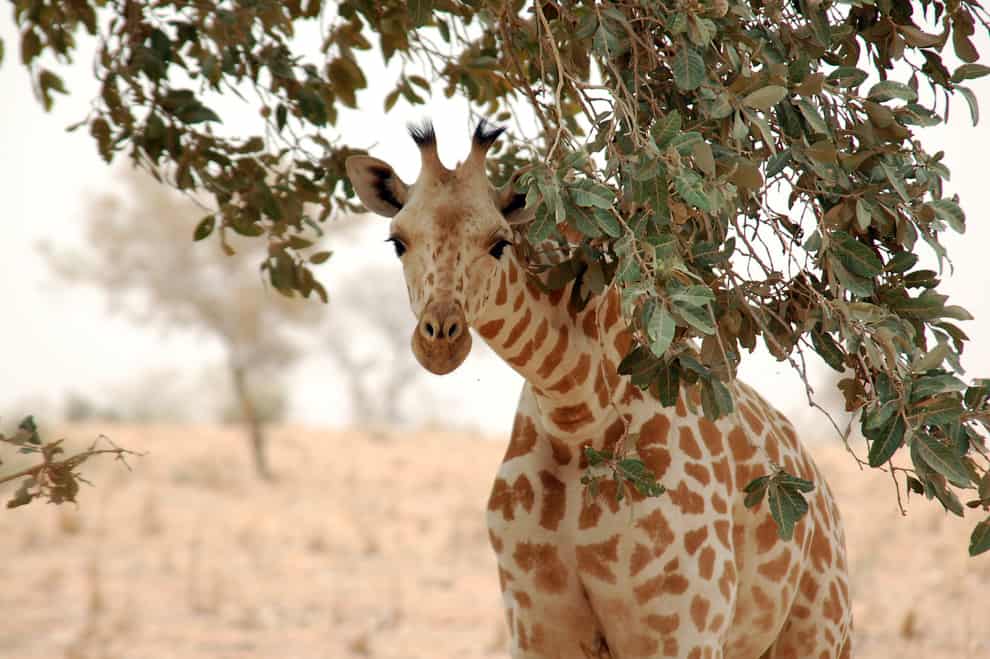
The Rothschild's Giraffe got its name from Walter Rothschild.
The Rothschild’s Giraffe is named after Walter Rothschild, a British banker, politician, and zoologist. Distinguished for its unique coat, the Rothschild’s Giraffe sports dark orange and brown patches with areas of beige, and no markings on its lower legs.
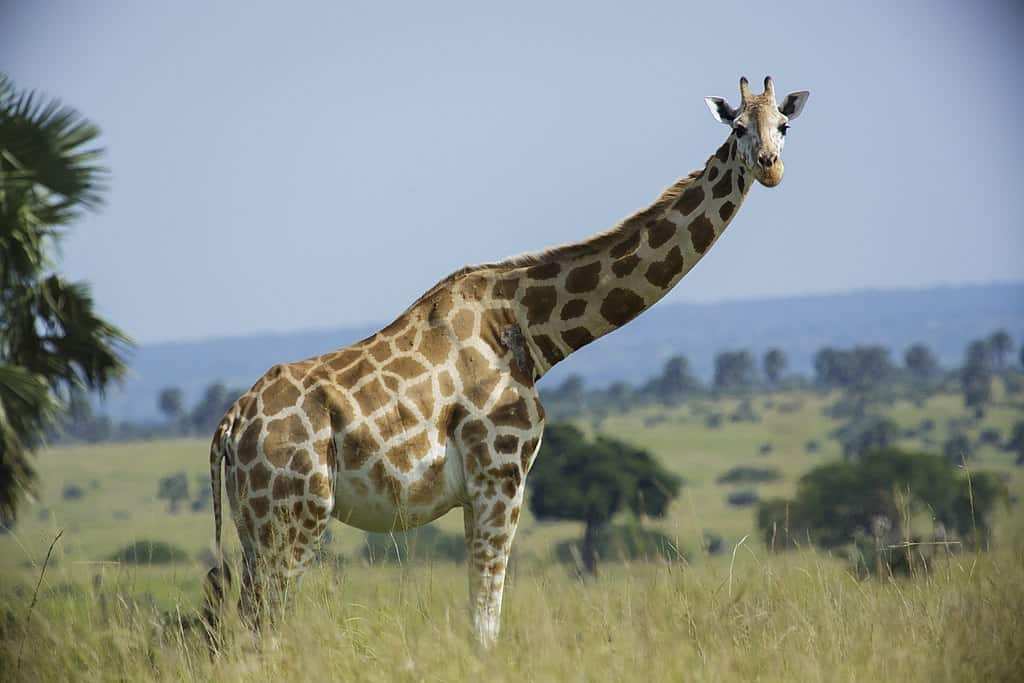
The giraffe's tongue is 20 inches long.
The giraffe’s tongue can reach up to 20 inches long. The giraffe tongue is usually colored black, blue or purple to protect against the sun’s UV rays. Now that’s one for giraffe facts that’ll get you tongue-tied.
The Reticulated Giraffe is the "most common" in the world.
Originating from a peninsula called the Horn of Africa, the Reticulated giraffe is the most common giraffe seen in zoos. The Reticulated giraffe’s coat has large, polygonal, liver-colored spots outlined by a group of bright-white lines. The spots can often appear in deep reddish-orange, which can also cover their legs.
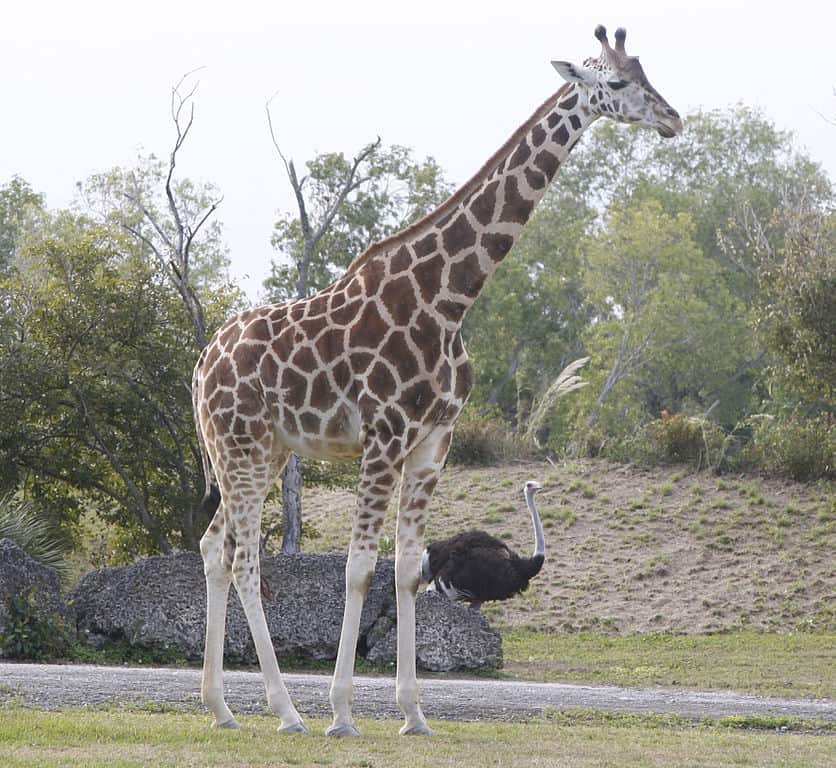
The Masai Giraffe is the biggest subspecies of Giraffe.
The biggest subspecies of giraffe is the Masai giraffe. Found in Kenya and Tanzania, it has distinctive, jagged, irregular, star-like blotches that extend to their hooves. The Masai giraffe got its name in honor of Herr von Tippelskirch. He is a member of a German scientific expedition in East Africa.
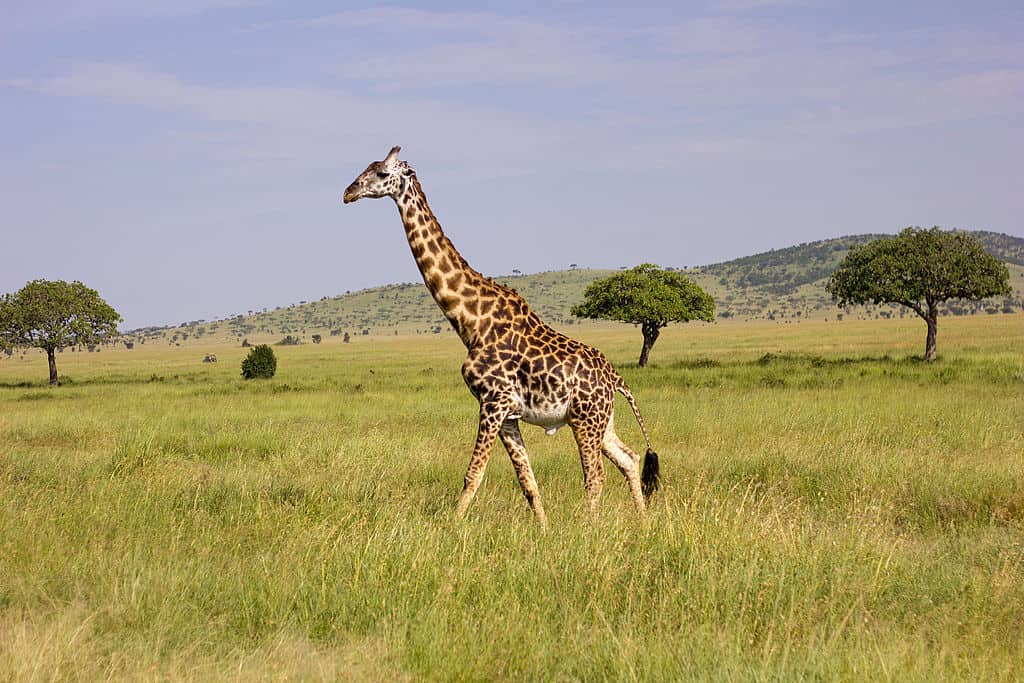
The Angolan Giraffe only exists in 4 African countries.
Found in Northern Namibia, South-western Zambia, Botswana, and Western Zimbabwe, the Angolan Giraffe subspecies has big brown blotches with edges that are relatively notched or have angular extensions. Its spotting pattern stretches down to its legs, but not the upper part of its face.
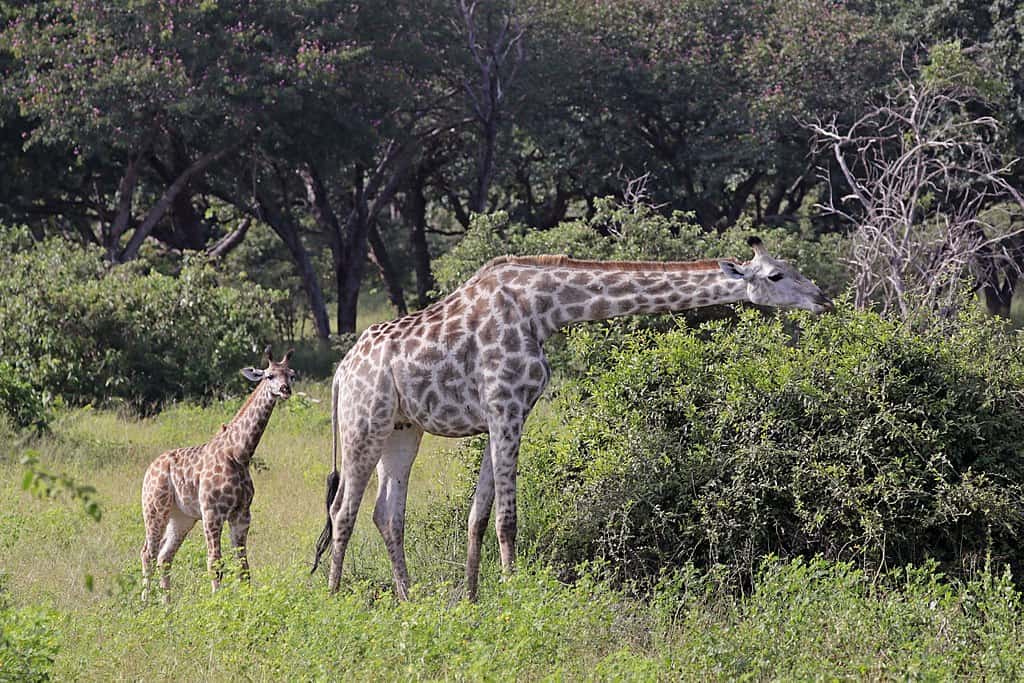
The South African Giraffe is only found in 5 African countries.
The South African giraffe is also known as the Cape giraffe. As its name suggests, it is a subspecies of Giraffe native to South Africa, Mozambique, Namibia, Botswana, and Zimbabwe. South African giraffes have spots with star-like extensions on a light tan base, all the way down to the hooves. The estimated population of South African Giraffe is at 31,500 individuals in the wild.
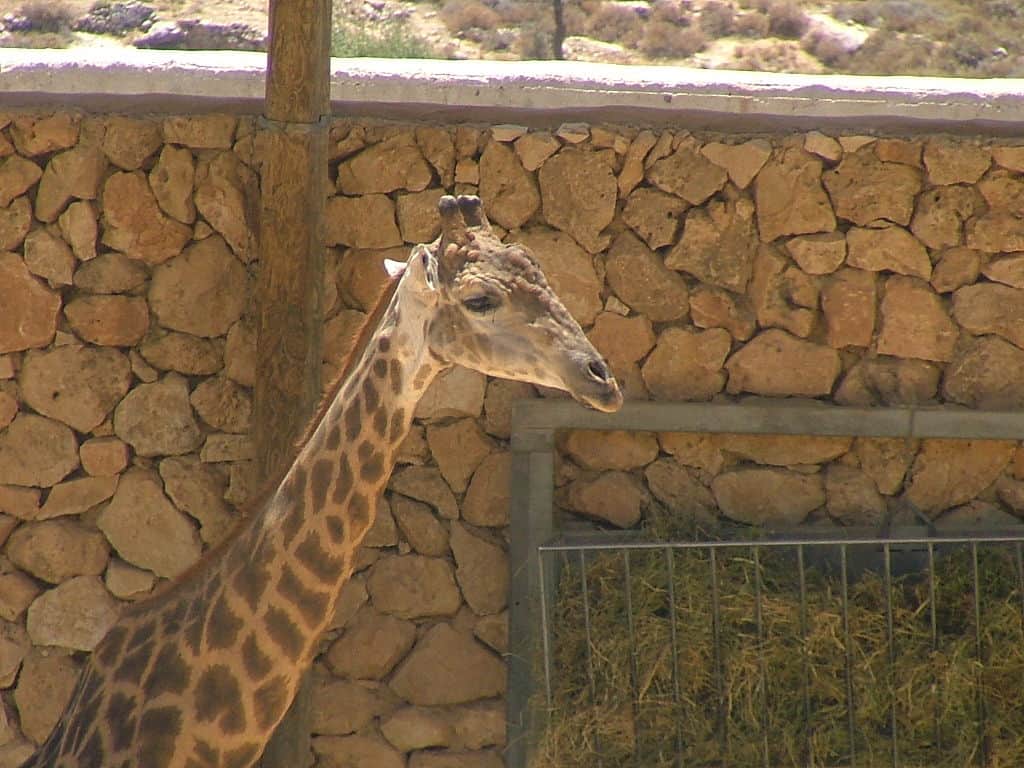
Necking is the most violent experience for giraffes.
Necking is the proper term for “giraffe-fighting.” In a giraffe’s environment, it is the most aggressive experience they are most likely to get in. Necking usually comes with head-butts, jousting, kicking, and biting.
A giraffe's spots are like human fingerprints.
Aside from the fact that giraffes have seven vertebrae the neck like humans, its spots in the body are much like human fingerprints. All the colored-spots of the Giraffe have different patterns. How’s that for cool giraffe facts?

Giraffes only sleep 30 minutes a day.
To protect themselves from predators, giraffes in the wild learn to sleep for only 30 minutes a day. If you think that’s extreme, here’s another one for giraffe facts: a giraffe’s total sleeping time is spread throughout the day in quick naps. However, in captivity giraffes can snooze more than 4 hours a day.
Giraffes make many sounds and noises.
Contrary to the belief of many that giraffes don’t make a sound or noise, giraffes do hiss, snort, make “whistle-like cries,” as well as create low-frequency noises that can’t be heard by the human ear. In other words, giraffes have vocal cords. Typically, young giraffes make most of these sounds since they are less cautious. Definitely one of the cooler giraffe facts.
A group of giraffes is called "tower."
One of the giraffe facts you can’t miss: A group of giraffes is called a “tower,” which is only fitting as it is the tallest animal on Earth.
Giraffes consume over 35 kilos of food per day.
Since adult giraffes can only get a few servings with each bite, they spend most of their time eating to meet their caloric need of around 35 kilos. Aside from their size, wild giraffes need so much food since they spend most of their time standing up.
Calves drink milk from their mother for the first four to six months.
Baby giraffes or calves only breastfeed for the first 4-6 months. From the 7th month onwards, the calves begin to eat leaves. However, if the calves still can’t reach the leaves from the trees, their mothers will pull leaves off and feed them to them. Isn’t that one for cute giraffe facts?
Giraffes are not territorial.
Giraffes are very social creatures, and they are not territorial at all. A tower of giraffes typically has 10 to 20 members without a dominant leader in their herd. Tower members are usually free to come and go as they wish.
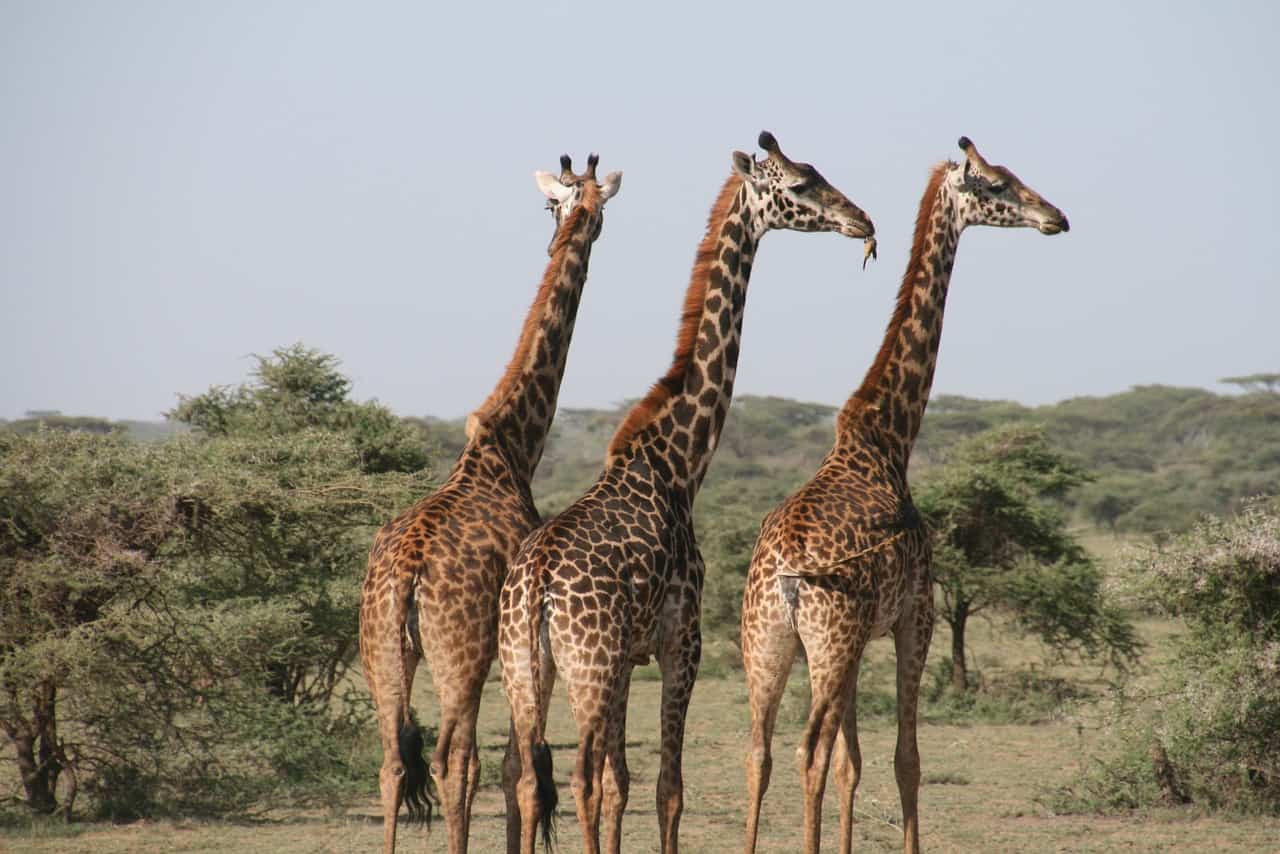
Male giraffes can fight with each other to get the right to mate with the females.
Giraffes may be one of the most social animals on the planet, but they still fight with each other for their mates.
Giraffes are the third heaviest animals in the world.
A young giraffe can weigh more than 150 lbs. On average, an adult giraffe approximately weighs 1,765 lbs. After the elephants and rhinos, giraffes are the 3rd heaviest animals in the world, and in some cases, other species of Giraffe can be as massive as 4,255 pounds.
A giraffe's heart weighs around 25 lbs.
While the human heart only weighs around 300 grams, the heart of a giraffe can weigh 25 pounds, making it the biggest heart of any land mammal. The giraffe’s heart pumps 60 liters of blood in their body every minute.
A running giraffe may appear to be moving in slow-motion.
If you observe a running giraffe in the wild, it may look like it’s running in slow motion. However, since giraffes have the longest stride of all land mammals, its “slow-mo” movement reaches speeds of 60 km/h. Unlike horses, giraffes run by moving both legs on the same side of their body together, which makes them look like they’re running in slow-mo.
Giraffes are not entirely defenseless.
The giraffe’s gentle nature might make it seem like giraffes would run from an attack, but giraffes are not entirely defenseless. One kick from a giraffe’s 6 ft legs can cause severe damage and even death for its pursuers.
Giraffe horns are called ossicones.
The horn of the giraffes are called ossicones (horn-like or antler-like bumps on the heads). Both males and females have ossicones which were formed from ossified cartilage covered in skin.
Giraffe hooves are almost the same size as a dinner plate.
With a diameter of 30 centimeters, a giraffe’s hooves are almost the size of a dinner plate. Their big hooves protect them from sinking into loose sand, regardless of their massive weight.
Some people eat giraffes.
In some places in Africa, people kill giraffes for their meat. In those areas, natives would consume any kind of meat that they can find for survival. The giraffe has a natural sweetness that may not be to everybody’s taste, and many say that it is not as tasty as other animals. Now that’s one of the giraffe facts to chew on.
The giraffe's individual numbers continue to plummet.
Thirty years ago, there were around 150,000 giraffes that roamed the savannas. However, as of today, the number of wild giraffes still roaming their habitats has been cut down by 40%-50%.
Giraffes are endangered due to 4 main reasons.
Human-wildlife conflict, meat consumption, illegal wildlife trade, and the expansion of human agriculture all contribute to giraffes’ dwindling population.
Male giraffes can test a female's fertility.
The male giraffe can test a female’s fertility by tasting her urine. In a phenomenon known as the Flehmen sequence, males would take mouthful of a female’s urine to know if she’d be a good mate or not. By doing so, the male giraffe can distinguish whether the female is in heat.
World Giraffe Day was established in 2014.
The World Giraffe Day is a yearly event and gathering initiated by the Giraffe Conservation Federation to celebrate the longest-necked animal on the longest day of the year: June 21st.
White giraffes are a product of rare pigmentation.
A White giraffe is a product of leucism which inhibits an animal’s skin cells from producing pigment but lets other organs stay dark-colored. Differing slightly from albinism, a white giraffe rarely occurs in nature. However, their numbers are lessened more so by poachers.
On March 11, 2020, poachers slaughtered two white giraffes in Kenya. According to Kenya officials, it was a sorrowful day since the Ijara are the only community in the world that houses the rare white giraffe.
Was this page helpful?
Our commitment to delivering trustworthy and engaging content is at the heart of what we do. Each fact on our site is contributed by real users like you, bringing a wealth of diverse insights and information. To ensure the highest standards of accuracy and reliability, our dedicated editors meticulously review each submission. This process guarantees that the facts we share are not only fascinating but also credible. Trust in our commitment to quality and authenticity as you explore and learn with us.
